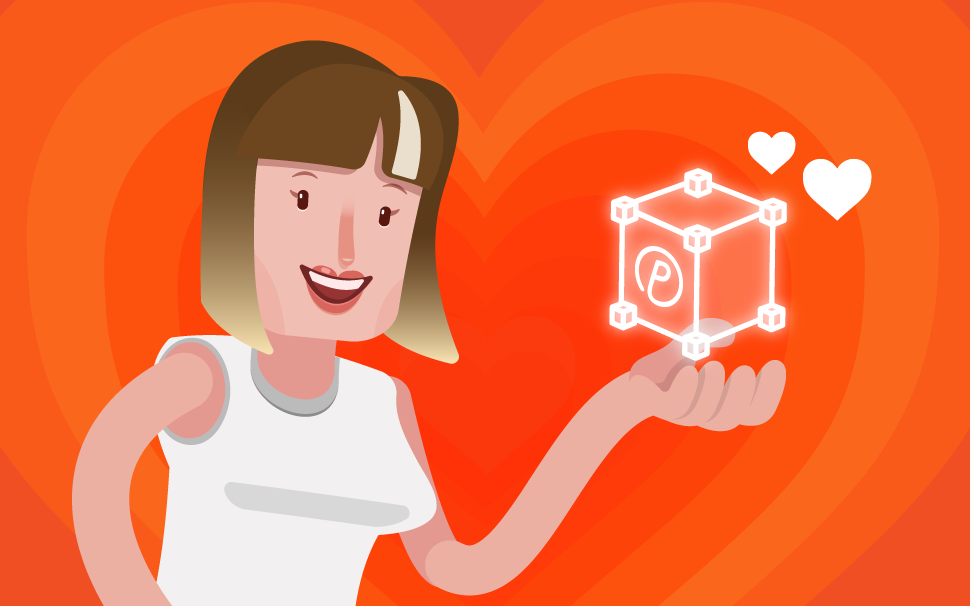
Over-delivery: how can this technique help you attract hardcore fans?
Do you know what over-delivery is? Understand this concept better and put this technique into practice to improve your business results.

What will we see in this post
When it comes to sales, the customer always comes first.
This is effective from the moment the user researches your product for the first time until when she decides to purchase it.
There are several strategies that you, as a Producer or Affiliate, can put into practice to provide the best user experience for your target audience.
One of them is Over-delivery, and this is our topic for today’s post.
If you look up the word over-delivery in the dictionary you will find “To deliver more than is required or expected”, but in marketing, it goes beyond to mean: to “exceed expectations” and even “delight”.
Over-delivery and the digital market
Although it is far from being a new strategy, over-delivering gained momentum with the expansion of the digital market, for basically two reasons:
On the internet, people need more arguments to make the purchase
In 2016 alone, online market turnover was 2.671 billion dollars.
Despite the impressive numbers, some users still don’t trust the Internet to make purchases.
In the market of digital products, this situation is even more common since there is no physical product, only the content available online.
In this context, over-delivery gained momentum as a way to show these users that not only is it safe to buy over the Internet but they can also obtain other advantages.
The Internet reach
Unlike conventional markets, on the Internet it is possible to automate the sales process, thus impacting more users with your product.
How to put over-delivery into practice
Over-delivery is no rocket science and it is likely that you have put this concept into practice at some point when you were trying to make a sale.
I’ve put aside some tips on how you can adopt this technique once and for all in your support routine to make your customer base loyal.
Get to know the pains of your buyer persona
To offer a shopping experience that stands out, you need to understand what your visitors are looking for when they get to your page.
What problems does your audience face every day? What kind of content do they consume? This information influences not only the creation of your product but also when it’s time to promote it and make it available on the Internet.
If you still have questions about the topic, read our post on how to create a buyer persona for your business.
Create an epic sales page
When the user accesses your website or social networking site, she isn’t always prepared to make the purchase.
But, from the moment she enters your sales page, it means that she wants to know more about your product, to find out if that’s worth buying.
This is your chance to convince her that your product/service is the ideal one for her.
To do this, your sales page must contain complete and accurate information about your product, policies that enhance the reliability of the page, and consistency between text and image.
Information you can’t not provide
A good sales page is the one that answers all your client’s questions and overcomes her objections.
In the case of online courses, for example, the user will only feel safe to make the sale if she understands all the advantages she will have when buying that product.
In order to do so, your description should contain not only the theme you will address but also the number of modules and what is covered in each one, what readings or additional materials the lead will be entitled to, if that course has interactive features such as quizzes, chat with teachers, among others.
Payment conditions are also mandatory information. Flexibility in payment can become a powerful argument when it’s time to convince the user to make the purchase!
Policies that protect the right of consumers
Privacy Policy and Terms of Use:
They are documents that explain how the information collected on your website will be used. (What kind of information will I get in exchange for providing my email?)
Disclaimer:
A disclaimer aims to clarify that the results promised by the Producer can be influenced by several factors. (By agreeing to this document the user assumes the risk of buying the product and not getting the results announced.)
Contact:
A direct channel between the buyer and the Producer if the former has questions about the product.
Consistency between text and image
If you put different elements on your sales page, with no connection among them, your user cannot identify how she can buy your product.
Copy and design are the interfaces between Producer/Affiliate and buyer. Make sure these elements are aligned with each other and, especially, aligned with the interests of your target audience. Only then your message will be noticed by your audience as relevant content for them.
You can find more tips here.
Instant delivery
When the user buys on your ecommerce, she hopes that your product will be available on the maximum deadline that was informed on your website.
But that doesn’t stop you from delivering your product beforehand! This proactivity reinforces your concern in offering the best shopping experience for your customers.
In the case of ecommerce, some factors may influence the speed of delivery, but when it comes to digital products (which are the focus of this text), the products should be available to the user as soon as the payment is approved.
Make it clear at the time of the purchase that at the time the transaction is confirmed by the payment processor, the buyer will receive her login and password to access the platform where your product is hosted.
Immediate delivery is another useful argument for handling your buyer’s objections if she wants to buy another product on your page.
Another tip that can make the difference for your business is asking for the consumer to make an assessment of that purchase, taking into account cost/benefit of the product, speed of delivery, quality of content, among others.
This resource is used today by apps such as Uber and can give you good ideas about how you can improve your user’s experience.
Discount in buying more products
An over-delivery tactic is offering discount coupons for other purchases that the visitor makes on your website.
In the example below, a website that sells train tickets offers $ 10.00 redeemable on a travel website that offers tours around Italy, if the buyer answers a satisfaction survey.
In addition to maintaining active relationships with your base, this kind of action encourages the user who has already bought on your site to keep on converting.
Bonus and rich materials
When you make a rich material available, without any extra cost for it, you foster a sense of “reciprocity” on your user, which influence her buying decisions in the future.
She can buy with you again because, in addition to delivering a quality product, you provided a content that was useful for her and that has added even more value to that purchase.
It’s as if a Producer who has a course in bodybuilding for beginners offers an ebook with protein-based recipes, for example.
But be careful so that consumers don’t see this strategy as a tie-in sale, which is when you offer a product tied to the other.
Your language must be very clear so that the user understands that she is paying only for the product you are advertising, and any other materials that you choose to send are free and are not included in the price of the purchase.
Products test
You can use this tactic to test your product’s reception in the market before launching it.
Imagine that you have a subscription club about cinema, for example. How about offering a free version of this product for customers who interact with you the most on your social networking sites?
This is a way to reward users and show that there are advantages to following your launches closely.
Efficient support
Under EU rules, the customer has up to 14 days to regret online purchases.
This timeframe may vary according to the platform where the product is hosted and in accordance with the deadlines set by the seller.
What I mean is that your job does not end when the user receives the product.
What if she has any doubt on how to use it? And if she is not satisfied with the purchase?
Over-delivery is to deliver a complete purchase experience for the user and this also concerns the post-sale stage!
The more empathy you show when serving your customer, the greater the chances of her recommending your product or service to a friend.
Customer Service 2.0
Nowadays social media is the main communication channel with your client.
But, for your communication to be smooth, it is not enough having an active profile on these networks, you need to be available to answer users who contact you through your fan page.
This practice is known in digital marketing as Customer Service 2.0.
Customer Service 2.0 is very similar to the support service, but it sets itself apart by response time and complexity of the demands.
Difficulty Level
While the support solves complex questions, Customer Service 2.0 is perfect to answer specific questions.
E.g.: I can’t access one of the online modules from the course I bought (Support demand)
When will you release the next module in the course? (Consumer Support 2.0 Demand)
Because of the simplicity, the contact made through social media should be faster and more to the point.
While the support service is by nature more time consuming, with an average response time of up to 24 hours.
That doesn’t mean you should ignore the emails as soon as they arrive.
Remember that in both cases, customer satisfaction depends on how fast your answer is.
The longer you take to answer a question, the greater the chances of your client being unhappy.
From buyer to evangelist
It is important to keep in mind that your buyer’s journey is not always linear. She might visit your website several times, put the product in the cart and give up the purchase on the checkout page.
On the other hand, it can also happen that she visits your sales page only once and purchases your product or service.
Having in mind the different experiences that the user may have within your page, it is important that you also have different strategies to address customers according to the stage they find themselves in.
This attention to detail makes all the difference when it’s time to convert a single visitor into an active evangelist of your brand.
Bonus tip: Never promise something you can’t deliver
Over-delivery is about delivering beyond what was expected by your client.
If you create expectations right away, what was once a delivery that was supposed to be one-of-a-kind turns into something that is commonplace. And depending on the level of expectation it can even be disappointing.
Don’t go overboard in your attempt to surprise your customer: don’t offer deadlines you can’t meet nor bonuses that do not have the same quality of your product, only to deliver something different.
Following our tips, you will show your consumer that you’ve set aside time to think of something to surprise her and to transform her purchase experience into something memorable.
Did we forget to talk about anything? Feel free to leave your suggestions in our comment section below.





